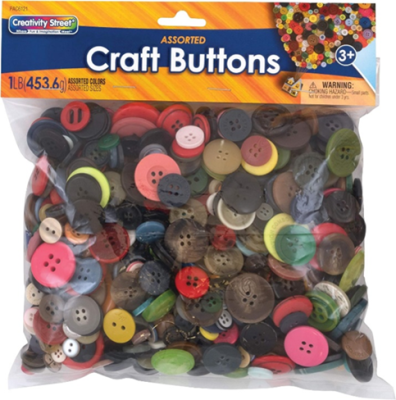Fresno County is one of the highest counties in the state when it comes to the number of children with high levels of lead in their blood.
Lead poisoning is
100% Preventable
What can you do?

1. Stay Informed

2. Avoid Exposure

3. Get Tested
|
#1 Stay Informed

|
Lead can be found in common places where children play, from outdoor areas to older homes. Stay informed about the dangers of lead exposure and take action to keep your children safe. For more information, contact our Childhood Lead Poisoning Prevention Program (CLPPP), or visit cdc.gov/nceh/lead/ for additional resources. |
|
#2 Avoid Lead Exposure

|
There’s no “safe level” of lead, and even low levels of lead can affect a child’s IQ and academic achievement. The key to avoiding lead poisoning in your children is to avoid lead exposure in their everyday environments. |
|
#3 Get Tested

|
Talk to your child’s doctor about getting tested for lead poisoning, and watch for possible changes in their behavior. Young children face the greatest risk of lead poisoning. It’s recommended that children get tested for lead poisoning at ages 1 and 2. |
Common Sources of Lead Exposures
- Old peeling paint
- Contaminated soil and dust
- Imported ceramics
- Crystals
- Imported toys and jewelry
- Stained glass
Occupational Exposures
- Welding
- Remodeling of older homes
- Shooting ranges
Childhood Lead Poisoning Prevention Program (CLPPP)
About The Program
The Childhood Lead Poisoning Prevention Program (CLPPP) provides services to the community to increase awareness about the hazards of lead exposure and increase the number of children tested for blood lead poisoning.
In addition to information and education to the general public, the CLPPP offers home visitation, environmental home inspections and health education to families of severely lead-poisoned children. Telephone contact and educational materials are also provided to families of moderately lead-poisoned children.
Program Outreach Events
The program observes two campaigns every year — National Lead Poisoning Prevention Week in October and National Poison Prevention Week in March. During these two months, the CLPPP participates in outreach events such as presentations to parents, and media campaigns to spread the word about the dangers of lead poisoning in children and how to prevent it. The CLPPP is busy throughout the year case-managing children who have lead poisoning and those who are potentially at risk.
Recall Items Due to High Levels of Lead
The recall of Target's Good & Gather Pea, Zucchini, Kale & Thyme Vegetable Puree baby food because it can be contaminated with lead and in violation of the Federal Hazardous Substances Act.
Lead is toxic if ingested by young children and can cause adverse health effects. This product was distributed in Target stores and recalled by Fruselva USA on March 12, 2025. The recall applies only to lot numbers 4169 and 4167 with best by dates of December 7 and December 9. The product is in 4oz packages labeled 6+ months. More information about this recall is available on the United States Food and Drug Administration Enforcement Report Database. An image of the product is below.
• Immediately stop using the recalled product and return it to a Target store for a full refund. Consumers with questions can Contact Target Guest Relations at 1-800-440-0680.
• Test children for lead exposure if children used this product.
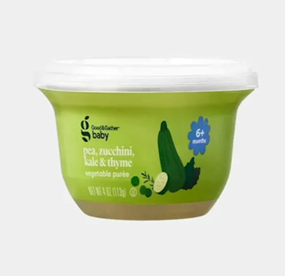
The recall of nearly 459,200 Stanley Jr. Kids Wheelbarrow and 7-piece Garden Sets intended for children to use for playing and learning. This product is being recalled because the long hoe and rake in the garden set contain levels of lead that exceed the federal lead paint ban. The long hoe and rake have yellow-painted handles with “Stanley Jr.” painted in black.
Lead is toxic if ingested by young children and can cause adverse health effects. The product was sold exclusively at Costco stores and www.costco.com from February 2024 through June 2024 for about $35. The wheelbarrow has a white label on the bottom that states “Red Toolbox” with the manufacturing date of 12/2023. More information about this recall is available on the United States Consumer Product Safety Commission website. Images of the product are below.
- Immediately stop using the long hoe and rake and take them away from children.
- Visit Red Toolbox’s recall website (https://www.recall-rtb.com/) for information about receiving a free replacement long hoe and rake.
- Test children for lead exposure if children came into contact with this product.

The recall of about 6,900 Yaomiao Children’s Jewelry Sets. These products are being recalled because they were found to contain levels of lead and cadmium in violation of the Federal Hazardous Substances Act.
Lead and cadmium are toxic if ingested by young children and can cause adverse health effects. These products were sold exclusively on Amazon.com from January 2022 through March 2024. More information about this recall is available on the United States Consumer Product Safety Commission website. Images of the products are below.
- Immediately stop using the jewelry sets and take them away from children.
- Contact LordRoads at simlordroadple@163.com for information about receiving a full refund which includes sending a picture of the disposed product. LordRoads and Amazon are contacting all known purchasers directly.
- Test children for lead exposure if children came into contact with this product.

The recall of the braided black bracelet sold with the Skechers jewelry gift set. This product is being recalled because the clasp on the bracelet contains elevated levels of lead and cadmium above the federal limit, posing a hazard to children. The braided bracelet was sold in a set with a watch and other bracelets that are not included in the recall. These items were sold at Skechers stores nationwide and online at Amazon.com, watchstation.com, and skechers.com from August 2023 through January 2024. More information about this recall is available on the CPSC website. An image of the product is below.
Additionally, consumers can contact Fossil Group at 800-842-8621, email at info@fgservices.com or visit the company’s recall page
Test children for lead exposure if children used or played with this product


The recall of nearly 2,900 Creativity Street Foam Pattern Rollers intended for children to use for painting. The foam pattern rollers come in four assorted patterns, with yellow, green, blue, and red handles. This product is being recalled because it contains levels of lead that exceed the federal lead content ban in the rollers’ handles. Lead is toxic if ingested by young children and can cause adverse health effects. The product was sold online at Amazon.com, StaplesAdvantage.com, MacPhersonsArt.com, ADASales.com and Walmart.com, and at the Teacher’s Edition store in Brooklyn, New York, from September 2023 through January 2024 for about $15. More information about this recall is available on the United States Consumer Product Safety Commission website. Images of the product are below.
- Immediately stop using the recalled foam pattern rollers and take them away from children.
- Contact Dixon Ticonderoga (compliance@dixonusa.com or www.dixonticonderogacompany.com) to receive a pre-paid label to return the recalled product for a full refund once received or discard this product if present.
- Test children for lead exposure if children came into contact with this product.

Certain cinnamon products listed under the brands of: La Fiesta, Marcum, MK (pending notification from FDA), Swad, Supreme Tradition, and El Chilar.
These products are being recalled because they contain elevated levels of lead and prolonged exposure to these products may be unsafe. These items were sold at La Superior SuperMercados, Save A Lot, SF Supermarket, Patel Brothers, Dollar Tree, Family Dollar, and La Joya Morelense (Baltimore, MD). More information about this recall is available on the FDA website. Images of the products are below.
- Avoid eating, selling, or serving these products.
- Check your homes and discard these products if present.
- Test children forlead exposure if children consumed these products.






Sandford Family 6-Player Croquet Sets. These products are being recalled because the paint or surface coating on the red mallet, blue mallet, red hoop, and winning post containelevated levels of lead above the federal limit, posing ahazard to children. The storage bag is branded with either a Big Game Hunters logo on a blue bag or a Garden Games logo on a green bag. These items were sold by Amazon.com from May 2015 through June 2021.More information about this recall is available on theCPSC website.An image of the products is below.
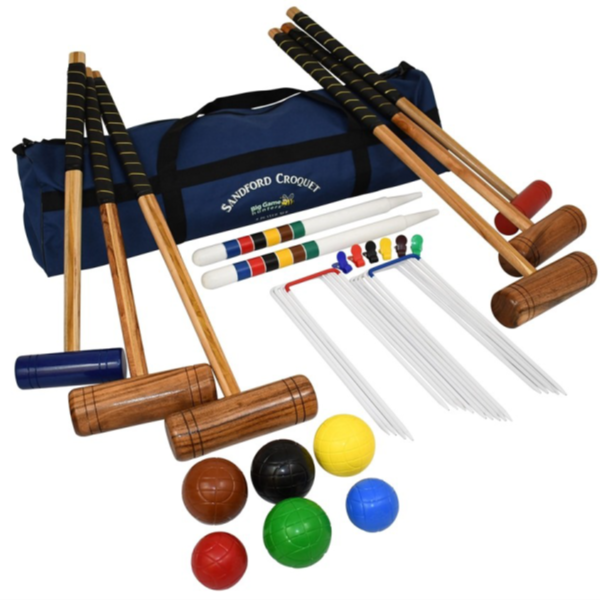
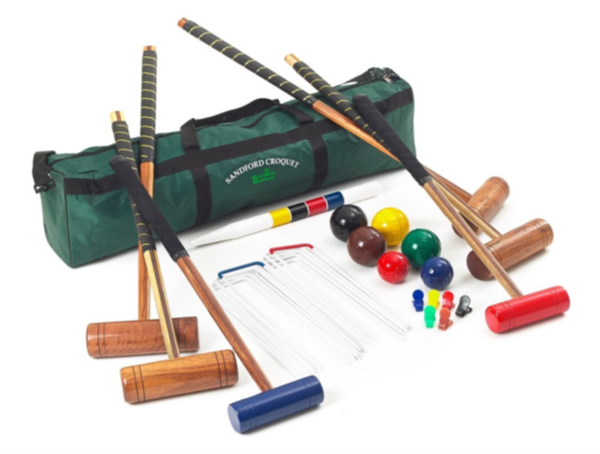
Primark children’s bamboo plates in the shape of a bunny, a bear, Winnie the Pooh character, and a rainbow. These items contain elevated levels of lead and formaldehyde, posing a hazard to children. These items were sold at Primark US stores located in the northeast region, Florida, and Chicago from October 2021 through August 2022. More information about this recall is available on the CPSC website. Images of the product are below:
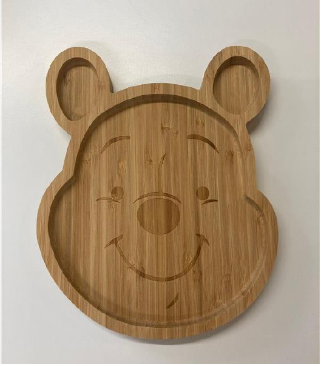

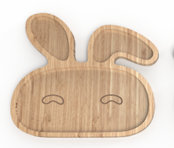
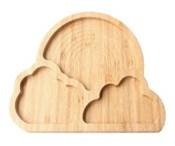
Hatley USA’s Opalescent Angel Wings children’s headbands. This product is being recalled because it contains levels of lead that exceed the federal lead content ban, posing a lead poisoning hazard to children. More information about this recall is available on the CPSC website. Images of the product are below:


CUPKIN Double-walled stainless steel children’s 8 oz. and 12 oz. cups. The cups come in 12 different color combinations and were sold online at Amazon.com and Cupkin.com from January 2018 through March 2023. These products are being recalled because they contain levels of lead that exceed the federal lead content ban, posing a hazard to children. More information about this recall is available on the CPSC website. Images of the product are below:
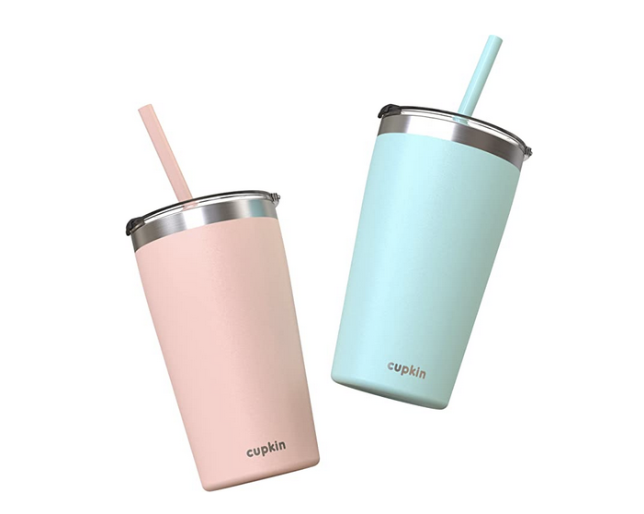
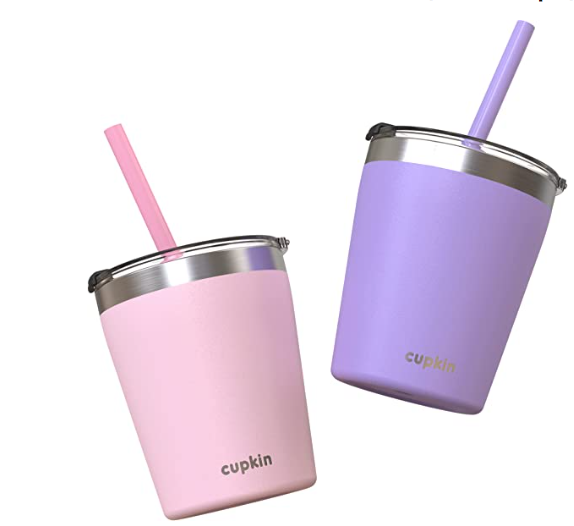
On November 3, 2023, The U.S. Food and Drug Administration (FDA) issued a public health alert advising parents and caregivers not to purchase or feed Schucks brand or Weis brand apple cinnamon applesauce pouches to toddlers and young children because they may contain elevated levels of lead. This is in addition to their previous alert on October 28, 2023, for WanaBana apple cinnamon fruit puree pouches (email below). Images of the products are below. The alert includes these specific lot codes:
Schucks brand cinnamon-flavored applesauce pouches and variety packs purchased at Schnucks Markets or Eatwell Markets: Schnucks Cinnamon Applesauce Pouch, 12 pk., UPC: 4131801152
Schnucks Cinnamon Applesauce Pouch, 4 pk., UPC: 4131801155
Schnucks Applesauce Pouch Variety, 20 pk., UPC: 4131801157
Weis brand cinnamon applesauce pouches purchased at Weis Markets: UPC: 041497216123
Schnuck Markets Inc. has agreed to recall the affected products. More information is available on the Schnucks recall web page. Parents should check the lot code and expiration date numbers and immediately stop giving this product to their children and return any unused pouches to the store that they bought them from for a full refund. Consumers with questions can contact the Schnucks Customer Care team at 314-994-4400 or 1-800-264-4400.
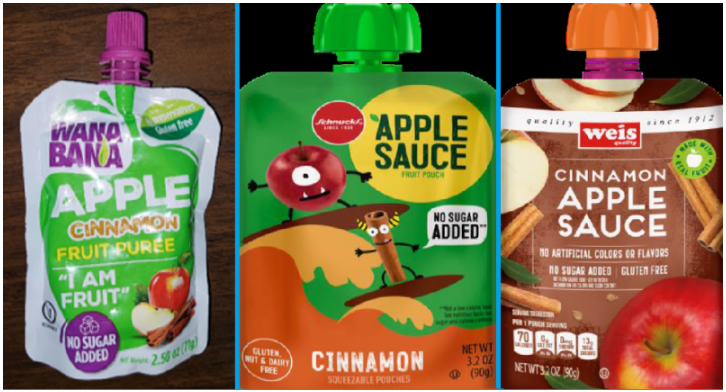
Dixon Ticonderoga Creativity Street Children’s Assorted Craft Buttons. This product is being recalled because it contains levels of lead that exceed the federal lead content ban, posing a lead poisoning hazard to children. More information about this recall is available on the CPSC website. Images of the product are below:
